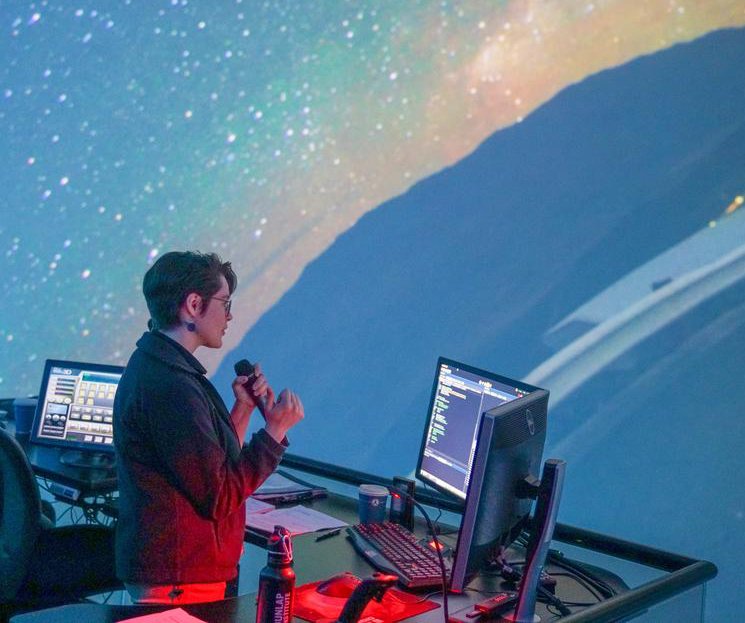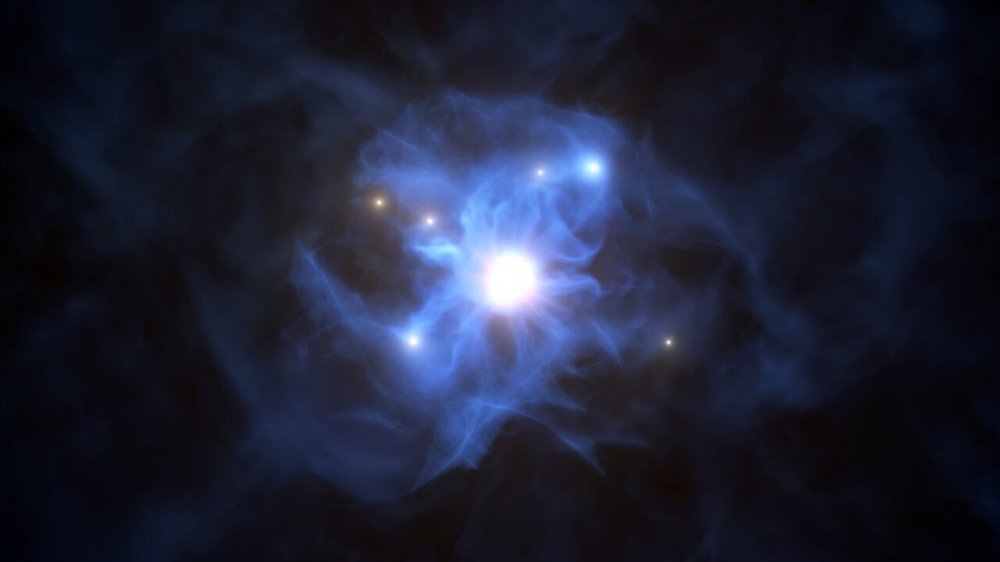Halloween in Space? Cosmic Spider Webs and Supermassive Black Holes
With Halloween right around the corner, maybe you’ve noticed people decorating with spider webs and lots of black. It seems fitting, then, that some space news about spider webs and black holes was released in October. An international team of astronomers discovered a “spider web” of hydrogen gas connecting galaxies around a supermassive black hole, answering questions about how the earliest black holes grew.
Let’s dig in and have Museum Astronomy Educator Mariarosa Marinelli break down the details.

Light travels at a very fast but finite speed, so as we look farther away from Earth, we are also looking back in time. From many observations of the farthest and oldest light we can see, we know that our universe is about 13.8 billion years old.
The stars that formed in the first billion years of the universe were incredibly massive. When they died, they collapsed into the earliest black holes. But in order to match observations of the universe’s first billion years, there must have been more matter around to help those first black holes grow into the supermassive black holes we’ve spotted. So, where is the matter?
Astronomers used several different telescopes, including the European Southern Observatory’s aptly named Very Large Telescope, to observe the environment around a supermassive black hole, or SMBH. Six galaxies were revealed to be grouped around the SMBH, all connected within a web of hydrogen gas more than 300 times the size of our Milky Way galaxy.

With the help of ESO’s Very Large Telescope (VLT), astronomers have found six galaxies lying around a supermassive black hole, the first time such a close grouping has been seen within the first billion years of the Universe. This artist’s impression shows the central black hole and the galaxies trapped in its gas web. The black hole, which together with the disc around it is known as quasar SDSS J103027.09+052455.0, shines brightly as it engulfs matter around it. Credit: ESO/L. Calçada
Imagine you’re walking down a sidewalk and you suddenly see a giant spider in front of you, as if it’s floating in midair. Then you look around, and notice the spiderweb it’s spun around itself, and perhaps some prey caught in the web. Similarly, galaxies growing in a web of hydrogen gas around a supermassive black hole funnel more fuel for the supermassive black hole to grow even more massive.
These cosmic webs aren’t constructed by some cosmic spider, however. Astronomers believe that halos of dark matter are responsible. Dark matter is a mysterious, invisible form of matter that is almost 6 times more abundant than the “normal” visible matter we’re used to.
Dark matter helps hold our galaxy together through gravity. Without the extra mass from dark matter, stars like our sun would likely go flying out into space instead rotating with the Orion arm of the Milky Way!
In the earliest days of our universe, hydrogen gas collected along these dark matter halos, forming these cosmic spider webs along which galaxies formed and grew. Now we know that those cosmic webs gather enough gas for black holes to quickly become supermassive, clicking another piece of the cosmological puzzle into place.
So the next time you see a spider web, maybe instead of Halloween decorations it will make you think about space and the cosmic discoveries happening every single day!
The Museum is hard at work helping you to discover your world despite dramatically reduced financial resources. If you'd like to help us continue this work, click here to learn how.